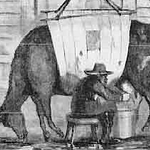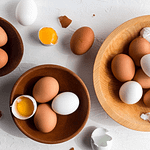Purim is a time of frivolity, dressing in guise, and partying like there’s no tomorrow. Join Kim and Leigh as they discuss this Jewish holiday of deliverance replete with costumes, noise makers, and gift baskets filled with food.
Food has always been a means to get closer to different communities and histories. In this episode, Purim will be the center of our discussion, which not many people are familiar with. It’s a joyous Jewish festival that celebrates the saving of Jews from Haman – a Persian Empire official. He was attempting to kill all Jews.
What is Purim
Jewish people celebrate Purim wholeheartedly, and its customs are frivolous as compared to other Jewish festivals.
The four significant obligations of Purim are:
Listening to the public reading of the book of Esther in the synagogue. This is done in the evening and the next morning. It is called k’riat megillah.
Giving charity is known as matanot la’evyonim.
Sending food presents to friends which is called mishloach manot.
Eating a festive meal known as se’udat Purim.
Purim resembles Halloween because people wear symbolic costumes. The symbolism points to the hidden manifestation of God in all lives. Each one of us wears an imaginary mask throughout our lives which hides our true inner side. But at Purim, by wearing an actual mask, the inner self can explode. Jewish people reflect the spark of God and see it through each other at Purim.
Symbolism with the Celebration of Purim
Symbolism is not restricted to dressing only because many Purim foods are symbolic as well. For instance, the bite-sized hamantashen pastries that are filled with poppy seed filling have symbolic significance. If we see the etymological connection, we’ll have to learn about a medieval German pastry called mantashen. ‘Man’ means poppy seeds and ‘tashen’ means pockets.
In the 1500s, the German Jews renamed these pastries to hamantashen which obviously means Haman’s pockets. This is a clever play of words, and it symbolizes the rumor which said that Haman lined his pockets with pastries.
The second explanation of symbolism is a representation of Haman’s hat. It was a three-sided hat. Although history suggests that this item wasn’t present in Haman’s time, it’s still associated with the underlying symbolism.
As for the third explanation, it links to ancestry. The three corners of hamantashen represent the three patriarchal ancestors of Esther. The tradition of the poppy seed filling is itself symbolic, which connects to Esther. The first story goes that Queen Esther ate poppy seeds in the three-day fast when she prayed to God to help repeal the decree that was set by Haman. The second story is that to hide her faith from her husband, she ate everything from nuts, seeds, and legumes to remain genuine.
Consuming poppy seeds is an honor to Esther and how committed she was to her people. An interesting fact regarding symbolic food is that by eating hamantashen, one actually destroys Haman’s power. It resultantly eliminates the danger to the culture. This engaging concept arises due to the fact that eating symbolic food diminishes something, and in this case, it is the power of Haman.
Purim Transcript
🎧 Click here for the full, interactive transcript of this episode 🎧
Sources We Found Helpful for this Episode
Episode 7 -New Years Traditions: Pork for Progress, Stinky Fish, and Tall, Dark-haired Men
Episode – Curry: Invasions, Colonization, and Babar the Elephant
Books We Think You’ll Enjoy Reading
Recipes You Really Need to Try
Buttery Hamantaschen – Tori Avey
Savory Beef Hamantaschen – West of the Loop
Orange Olive Oil Hamantaschen – OMG! Yummy
Episodes We Think You’ll Like
We would love to connect with you
AsWeEat.com, on Instagram @asweeat, join our new As We Eat community on Facebook, or subscribe to the As We Eat Journal.
Do you have a great idea 💡 for a show topic, a recipe 🥘 that you want to share, or just say “hi”👋🏻? Send us an email at connect@asweeat.com
Review As We Eat on Podchaser or Apple Podcast. We would like to know what you think.
And please subscribe to As We Eat, Going Places. Eric and Leigh will be traveling in their converted van sharing stories of food culture from the road.
We have so much more waiting for you at the As We Eat Journal. For just a few dollars, you can get access to exclusive content as well as more in-depth articles and help keep our oven lights on!
Thank you for listening to the As We Eat Podcast. This post is public so share it with a friend - or three :)

























Share this post